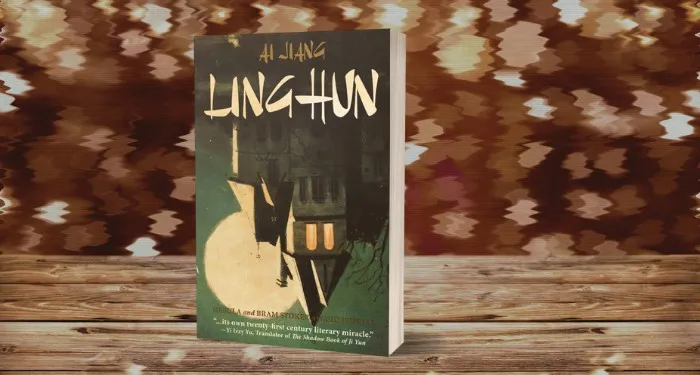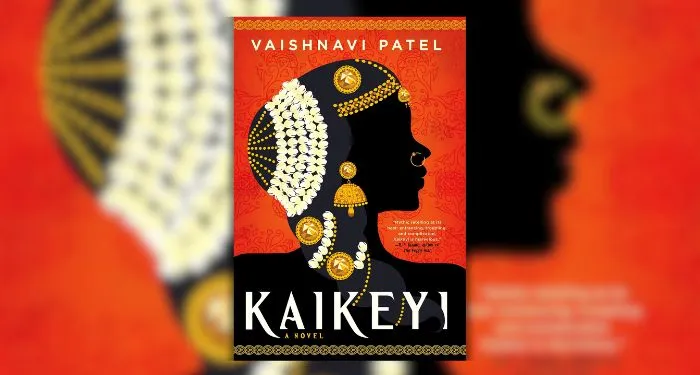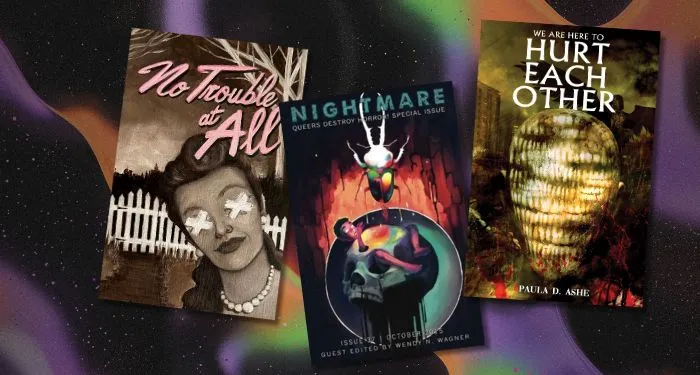The news in July that The New York Times had abruptly reassigned four arts critics to other posts, including to the wilderness of the obituary desk, was met with widespread consternation among arts aficionados. The four in question—the theater critic Jesse Green, the classical music critic Zachary Woolfe, the television critic Margaret Lyons, and the pop music critic Jon Pareles—were hardly underperforming, and in a couple of cases they were just starting to show signs of the relaxed mastery that a good writer can attain after a few years on the job. Because of this, the news raised concerns that reached beyond their individual virtues. They surely weren’t being reassigned because they had failed to fulfill their duties, at least as those duties had previously been defined, so was the job of arts critic about to change beyond recognition?
In recent weeks the Times has announced that Green will take on a more flexible position as “Culture correspondent,” covering theater as well as classical music and art; and Pareles recently published a substantial piece about the songwriter Jeff Tweedy. The initial wave of panic, full of doomsayers insisting, on scant evidence, that the Times was about to burn its arts section to the ground, now seems overstated, or at least misdirected.
Still, the widely leaked memo with which the Times culture editor Sia Michel informed her staff of these personnel changes is a concerning document. There’s no hint that the culture department is about to be DOGE’d out of existence, but writing, the critic’s core skill, seems at risk of being devalued in favor of willingness to participate in vaguely defined multimedia ventures:
Our readers are hungry for trusted guides to help them make sense of this complicated [cultural] landscape, not only through traditional reviews but also with essays, new story forms, videos and experimentation with other platforms.
Such a statement could mean many things, some of them potentially contradictory. I would welcome the idea of supplementing “traditional reviews” with “essays,” especially if such essays afforded arts writers a more generous word count and more time to reflect on the art they cover before hurtling to judgment. We shouldn’t pretend that the usual review process, which frequently requires critics to sweatily excrete a thumbs-up/thumbs-down verdict just hours after experiencing a new work, is some kind of writerly ideal.
But I can’t help but wonder whether Michel began her list with “essays” mainly as a means of appeasing her anxious staff, and whether her primary focus is instead on the three subsequent formats: “new story forms, videos and experimentation with other platforms.” It sounds like the Times may want to hire critics who, ideally, know how to write, but who might not be writers first and foremost. In the paper’s posting for the position of classical music critic, the hypothetical new hire is described, somewhat tortuously, as “a dynamic, digital-first writer who can conceive of multimedia-first criticism”; this critic should be “eager to embrace strong visual, audio and video components in [their] stories.” It isn’t clear exactly what it means for a writer to be “digital-first,” but the awkward phrase “can conceive of multimedia-first criticism” suggests that writing may play a subordinate role.
It’s unusual for me, as a composer and conductor, to train my gaze on the critics whose job involves analyzing my work. But this is a strange, perilous moment for arts coverage in America, a moment of atomization and almost purgatorial transition to new forms that no one, it seems, can yet see clearly. A generous reading of Michel’s memo would suggest that the possibility remains for a genuine expansion of arts coverage at the Times, and I want to articulate what such an expansion might look like.
We musicians sometimes need, for the sake of our mental health, to pretend that we never (never!) so much as glance at what anyone writes about us. But the reality is that most of us are grateful that there are listeners who care enough about music to translate their experience of it into language. And just as responsible critics often speak up in defense of artists and the work we do, now is a moment when I think we artists need to do the same for critics.
The traditional review, in the twentieth-century incarnation that still persists at most newspapers, is awkwardly caught between new forms of criticism that have emerged online, forms that can be both faster and slower, tighter and more expansive. On one end of the spectrum, there are YouTube “reaction videos,” which are not reviews so much as…views. They feature a subject experiencing a work of art—a song, a movie, a TV show—in real time. The sugar high that these videos deliver derives from the experience of watching the moment-by-moment operation of that artwork on the video’s subject: we glimpse the first nascent quiverings of their facial muscles as they teeter between glee and dismay; we see the almost-too-private pleasure of a chord change hitting home. Here, these videos promise: you will experience my experience, not meticulously worked over but raw, unfiltered, undiluted by such tedious cognitive processes as recollection, revision, or rethinking.
At the other end of the spectrum, there are Substacks—the latest iteration of the by-now-venerable blog format—where writers can publish limitlessly discursive essays, liberated from the production schedules imposed on them by newspapers or magazines. Considering the wide range of options currently available for critical discourse, the old-fashioned newspaper review affords neither the voyeuristic, reality-show frisson of a reaction video nor the luxurious sprawl of a Substack essay. The writer of a newspaper-style review of a live performance is typically asked to experience a work of art only once and then to craft a coherent assessment of it, often in under twenty-four hours. The more one thinks about it, the more it seems like this process, with its frantic timeline, might be the worst of all possible worlds.
It’s a problem that’s more or less unique to performing arts and film criticism. Book critics and restaurant critics get to experience the object of their analysis in a more leisurely, less regimented way. Pete Wells, who served as the Times’ restaurant critic from 2012 to 2024, made a point of underlining, in the essay announcing his departure from that post, that “virtually all of my 500 or so reviews were the result of eating three meals in the place I was writing about” and that—with the help of the guests he brought with him—he would try roughly thirty-six dishes in a given restaurant “before writing a word.” Book critics, though they too may face stifling deadline pressure, at least possess a copy of the book they’re reviewing; as they write, they can reread and spot-check to their heart’s content. When music critics review a new album, they surely listen to it multiple times before attempting a definitive evaluation.
Why, then, this perpetual demand that performing arts critics make definitive proclamations about works they barely know? If the performance being reviewed is a program of Beethoven symphonies that the writer has heard a hundred times, that’s one thing, but a brand-new orchestral piece, opera, or play rarely reveals its secrets on the first night. I’ve spent countless hours listening to music, and never once have I encountered a worthwhile new piece that I felt capable of assessing after a single hearing. If a musical work is powerful, or mysterious, or beautiful in some new way, then the listener’s initial experience of it is precisely an experience of incomprehension. It’s only with time, reflection, and repeated listenings that any critic can hope to gain entry to a piece of music, to get inside it and understand its inner workings, in such a way that they’re ready to speak about it to others.
Over the past year or so, I’ve noticed little tremors that suggested the Times was beginning to reckon with this issue. Woolfe, the paper’s erstwhile chief classical music critic, has occasionally written a review of a new work, only to contradict himself weeks or months later in a follow-up assessment. Last fall he wrote a somewhat dismissive account of Missy Mazzoli and Royce Vavrek’s opera The Listeners (2022), claiming that it and another piece he saw around the same time seemed stuck “in a kind of limbo: Not intense enough to fulfill the traditional expectations they raise, nor modern enough to jettison the old forms.” Woolfe wrote about the piece again roughly a month later, with no acknowledgment of his initial pan, and in his second account, The Listeners had somehow become “the unmissable opera of the season so far,” full of “effective, enigmatic, unsparing arias.” (I think this is closer to the mark.)
The problem here is not that Woolfe changed his mind or that an aesthetic experience fermented, in memory, into something richer and more meaningful. That’s how aesthetic experience works. The problem is that the critic’s initial, unchanged mind, suffused only with the knee-jerk superficiality of a first impression, is usually treated as authoritative.
If I were an arts editor at a major newspaper—a job I will never hold—I wouldn’t do away with day-after-the-show reviews altogether. But I would find a way to shift the weight toward more thoughtful, more deeply grounded assessments that are based on greater familiarity. Anything published the day after a performance should, I think, warn the reader to tread carefully: the paint is still wet. Such reviews could be billed as a “first look,” an initial reaction that is acknowledged as such.
One upside to publishing criticism online is that the review can be updated on an ongoing basis. I wonder if newspapers should think of a review’s webpage as a dynamic document, one that could feature a brief “first look” assessment the day after a premiere and that could be subsequently fleshed out with more detailed impressions and revisions upon repeated hearings. And since new operas and instrumental works almost never have an extended run of preview performances, as Broadway shows do, orchestras and opera companies should consider inviting critics to dress rehearsals or providing them with recordings of premieres, so that they can experience new works thoroughly and repeatedly. If it takes a couple of weeks for a review to find its definitive form, all the better. It does everyone a disservice—critics, musicians, and readers alike—when writers are forced to cram a still-incoherent impression into a deceptively coherent eight-hundred-word shape, as if they were eighth graders writing a five-paragraph essay for an in-class exam.
The public reaction to the Times’ personnel changes was mainly one of dismay. But among some of New York City’s musical institutions, the news of the reassignment of Woolfe, who until this summer was the paper’s chief classical music critic, may also have sparked a certain schadenfreude. Over the years I’ve heard plenty of people in New York’s classical music ecosystem—musicians, board members, administrators—mutter that surely Woolfe despised their organizations or imply that he was somehow trying, through his attentive and detailed coverage, to weaken their standing or bring them to their knees.
This is nonsense. Woolfe is one of the keenest and most devoted arts writers active today; he’s tough, but his is a stringency born of ardor. And I’ve always had the sense that he’s an institutionalist at heart, a listener who imprinted, early in life, on the mainstream of New York’s classical music world. Look no further than an affectionately obsessive essay from 2013 that chronicles his experience attending nine performances of a Metropolitan Opera revival of Vincenzo Bellini’s Norma, sitting in a different part of the theater each time. Still in his twenties, Woolfe was already looking back, waxing nostalgic about formative childhood experiences sprinting down the “cozily cryptlike” staircases from the Met’s cheap seats. This is not somebody who wants to burn the whole joint down.
When Woolfe became chief critic in 2022, his writing felt refreshingly crisp, his critical gaze gratifyingly high-definition. I appreciated that he never wrote the kind of timid, tautology-strewn reviews whose contents could be boiled down to “It was fine, I think,” or that mainly consist of anemic checklists of the performers’ competence, the assessments so syntactically similar that the writer might as well be filling in a Mad Lib. (The brawny baritone [x] sang with muscly fervor, the solid tenor [x] sang with virile strength, the plush Vienna Philharmonic played with velvety plushness, etc.)
Woolfe is capable of the subtle modulations of tone that alert the discerning reader to the difference between a perfectly OK performance, an unusually good one, and one that’s rare and exceptional. He has a particular affinity for opera and is blessed or afflicted with the opera aficionado’s fierce, pitiless, identificatory obsession with voices. When certified opera lovers write about singers, they frequently sound like a baby bird shrieking with existential desperation for sustenance, delivered by mouth from the maternal diva. This may not sound like a compliment, but this hunger is a prerequisite for the job, and Woolfe has it. He is capable not only of assessing a voice’s strengths and weaknesses but also—as in a touching celebration of the soprano Angel Blue’s portrayal of the title role in Giuseppe Verdi’s La traviata—of analyzing how a vocal quality that might seem to be a vulnerability can, in fact, contribute to a voice’s expressive power. It’s surely not pleasant for a singer to undergo a Woolfian vivisection, but you can’t accuse him of not listening.
Woolfe’s weaknesses as a writer are bound up, I think, with the flaws that inhere in the hasty production system of conventional newspaper reviews. He is sometimes ungenerous, unkind, irresponsibly dismissive. If he notices a particular flaw in a performance, he sometimes works himself into an effusion of toxic energy, like Groucho Marx in Duck Soup getting more and more agitated about an imagined slight from a rival dictator.
But Woolfe is one of classical music’s real listeners, and he’s capable of more than he’s achieved thus far. I hope, for his sake and his readers’, that in his next gig he’s able to stretch his limbs beyond the cramped basic-economy seat that is the old-school newspaper review.
It’s no coincidence that writers blessed with the luxuries of an ample word count and deadlines that fall weeks, not hours, after they hear a performance frequently do the best work. And though there are a handful of music writers that musicians respect—Justin Davidson, Anne Midgette, Gabrielle Ferrari, Joshua Barone, Steve Smith, and Joshua Kosman all come to mind, in addition to Woolfe—I would venture to say that Alex Ross of The New Yorker holds a unique position as a critic who is not only respected but widely and enduringly beloved by the artists he covers. At his best, Ross is capable of descriptions whose pithy lyricism can bring tears of gratitude to a musician’s eyes. He sometimes hears us more clearly than we hear ourselves.
For many younger musicians, Ross has been a cherished guide since our teenage years, ever since we looked up from the hermetic atmosphere of childhood music lessons and noticed that there’s a living, teeming world of music out there. As a high school senior, when I undertook an independent study of twentieth-century music, I treated Ross’s book The Rest Is Noise (2007), which had just been published, as an informal textbook. I remember sitting in a local library surrounded by piles of scores and CDs; as I tried to make sense of the contemporary musical world’s writhing mass of idioms and styles, I had the dizzying sensation of being at sea at night in a tiny rowboat. The Rest Is Noise helped me orient myself: it seemed a map of the night sky, a compendium of constellations, nebulae, mysterious astral objects. The book encapsulates Ross’s gift for gracefully crafting and tracing narrative threads without ever claiming that such narratives are total or totalizing. His instinct is always to gesture toward the abundance of the musical cosmos, to remind us that there’s more beauty out there than any of us could experience in a lifetime.
One has to read only a few lines of a Ross essay to sense that he broods over his sentences with a melancholy intensity worthy of Anton Webern. The Berlin Philharmonic is “that restive beast on the edge of the Tiergarten”; the composer Salvatore Sciarrino possesses a “lepidopterist’s regard for the slightest fluttering sound”; the tenor Jonas Kaufmann, whose emotional affect Ross sometimes finds frustratingly artificial, mishandles the Robert Schumann song “Mondnacht” so that “Schumann’s moonbeams seem a product of studio lighting.” He sums up the formidable institution-building powers of the orchestra executive Deborah Borda—who left the New York Philharmonic for the Los Angeles Philharmonic in 2000, then returned to lead New York’s flagship orchestra again in 2017—by pointing out that “in 2000, her move west had looked like a step down. Now, in a spatial paradox worthy of M.C. Escher, her move back east seems a step down again.”
At The New Yorker Ross is never required to write a piece whose basic gist is “I saw a concert yesterday and it was mediocre.” But even taking this into account, he weighs his words with unusual care: he reserves his energies to advocate for artists he believes in and to hold to account those who, in his view, have either attained undue power in the classical music world or wield their power to questionable ends. A number of his essays in recent years have followed a similar structure: he will first cast a skeptical eye on an artist who arrives swathed in hype and hyperventilation (Gustavo Dudamel, Klaus Mäkelä, Jonas Kaufmann) and then, in the second half of the essay, tilt the spotlight toward another artist who, in his view, is doing more worthwhile work to less fanfare (Nathalie Stutzmann, Xian Zhang, Michael Spyres). It’s an effective format, even if I sometimes wonder if those maximally prominent performers make for all-too-easy targets.
No writer, no matter how strong, can keep their finger on the pulse forever, and anyone who writes for The New Yorker long enough runs the risk that their style will be gnawed at by the punctilious moths of New Yorker Voice. In recent years an occasional, unwelcome note of censoriousness has crept into Ross’s writing. The nonagenarian conductor Herbert Blomstedt is unquestionably an artist worth celebrating, but in writing about him, was it necessary to shake a scolding finger at the “gifted but erratic young conductor Teodor Currentzis”? (The whippersnapper Currentzis was forty-nine years old at the time.) Ross has also joined the cavalcade of American critics who seem eager to pooh-pooh the conductor Klaus Mäkelä. Mäkelä is unusually young—twenty-nine—but he has won over every musician I know who has worked with him, even the most hardened of orchestra veterans. Is this youth-skeptical Alex Ross the same writer who defended the ambitions of the relatively fresh-faced Thomas Adès in 2004 by paraphrasing Tom Lehrer’s line that “when Schubert was Adès’s age he had been dead for a year,” or whose sensitive ear led him, in the same year, to notice exciting sounds emanating from university common rooms and recital halls, thanks to the student composers Timo Andres and Nico Muhly?
But these are minor points. What we need are more music writers who are ambitious and sophisticated enough to follow Ross’s example—to emulate his generosity, his open-eared sensibility, his loving commitment to weighing every word the way good musicians weigh every note.
Musicians, like actors and dancers, communicate to the audience from the pedestal of the stage. And I wonder whether the gap between stage and audience—combined with the sense many listeners have that the musician’s craft is weird and unknowable, the result of thousands of hours of quasi-athletic training mingled with black magic—contributes to the distance I sense between many music critics and the artists they write about. The relationship is frequently a vertical one, whether of veneration or contempt; many music reviews seem to be written from the same posture the critic had in their seat, neck craned back to look upward.
This tendency is less pronounced in literary criticism, in part because many novelists review other novelists, many historians review other historians, and so on. Among writers, the line between practitioner and critic is fuzzier and the relationship more lateral. Musicians write about one another less often, for the obvious reason that most aren’t especially comfortable writing prose. But I think more of us should give it a try, especially to spread the word about pieces or performers we feel passionately about. When musicians do expend the effort to write about music, the results can be unusually satisfying and can create a healthy sense that artists and critics are in community with each other. (I’m bemused to notice that an outsize percentage of classical musicians who write especially well about music are pianists: Charles Rosen, Jeremy Denk, Ethan Iverson, Timo Andres, Vijay Iyer, Jonathan Biss—the list goes on. Might virtuosity at one keyboard translate, somehow, into fluency at the other?)
The highest mark of respect that a critic can show artists is to move beyond binary good-or-bad judgments and to expend their energy illuminating how a work of art operates. I think of the much-missed poetry critic Helen Vendler, whose relationship with the poets she respected was not one of either adoration or antagonism; it seemed to be a conversation. The poetry was one side of the dialogue; Vendler’s analysis was the other.
As I reread some of Vendler’s essays on the poetry of John Ashbery, including several published in these pages, I was moved to notice the way she treated her engagement with Ashbery’s work as a living, dynamic process, a correspondence between friends: in a 2007 essay, she cheerfully acknowledges realizing, thanks to a discussion with him, that she’d gotten something wrong in a review published decades earlier.1 In that same review, she expends mercifully little energy on judgments; she’s more interested in tapping on a given line to test its acoustics and listen for what historical resonances resurface. Her primary task is illumination. Every critic has an implicit physical orientation toward the works they write about, and Vendler always seems to write from within the poem. She doesn’t position herself, as some critics do, outside the edifice altogether.
In a radiant review of James Merrill’s collection Braving the Elements (1972), Vendler treats the emergence of a beloved poetic voice as an addition to the family:
The time eventually comes, in a good poet’s career, when readers actively wait for his books: to know that someone out there is writing down your century, your generation, your language, your life….
[Merrill] has become one of our indispensable poets, earning that final unquestioned role of a sibling in our family, so that it no longer matters what exactly he does or what ups and downs he shows, since we take the latest news from his quarter as another entry in our common journal, we trust him, we accept wrong turnings as readily as right ones, certain that he knows his own way and will find it.2
Vendler subtly presumes the existence of a large extended family, one that includes poets, critics, and readers alike. It’s a lovely way to think about an ecosystem of artistic creation and experience. So from one branch of the musical family to another, speaking as a musician to aspiring music writers, I want to say: walk alongside us. Be in conversation with us. It isn’t easy out there; these days it’s even harder to find steady work as an arts writer than as a performing artist. But since the old newspaper-centric model of warmed-over hot takes has crumbled—and since it was never so great in the first place—why not go deeper? Why not write criticism that illuminates music you believe in with such passion and depth that it convinces readers they need to experience it for themselves? Come on in; take the time to know the music you love so well that you can speak from within a particular piece, not from outside it. Notice what we musicians are up to, tell us when you think we’re on the right track, tell us what you feel is missing, what you think music needs to say in our world. It’s a long road; we could use the company.



















 English (US) ·
English (US) ·